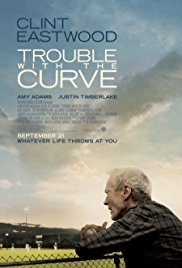1. Describe how the characters of Gus and his daughter evolved and changed during the course of the story told by this movie.
Suggested Response:
The following concepts should be included in any discussion of this question. Gus learned that he needed to communicate with his daughter and accept her desire to be involved in sports. Mickey, with the new information that Gus described to her, forgave him for his past failures as a father. She realized that she wanted to be involved in baseball as either a manager/attorney for players or as a scout working with her father.
2. What are the lessons that the filmmakers are trying to communicate in this movie? There is a baseball message and a message about human relationships. Are they valid? Explain your response.
Suggested Response:
A full discussion of this question will include the following concepts. The baseball message is that there is a role for observation in the evaluation of baseball players and that team management shouldn’t rely only on statistics analyzed by computer programs. The human relationship message is that people in close relationships such as families must communicate with one another or else there will be serious problems. In this case, Gus and his daughter were estranged for many years due to Gus’ inability to describe to his daughter why he sent her away.
3. Evaluate Gus as a father.
Suggested Response:
There are two points about this topic that should come up in a full discussion. Gus sent his daughter away because he could not give her proper supervision when he was on the road. The question is whether Gus should have changed jobs so that he could take better care of his daughter rather than send his daughter away. This is a complex question and there is no one answer. Different parents have answered this question in different ways; some deciding to be with their children even if they have to change jobs. Others, like Gus, keeping their jobs and making adjustments in the way that they raised their children. In each case parents must balance their need for self-realization in the job that they love against their responsibilities to their child. For example, what would have happened to Gus if, in addition to losing his beloved wife, he had lost his beloved career? However, even if it was the right thing for Gus as the parent to stay on as a scout and send his daughter away, he had an obligation to make sure she understood that he still loved her and to visit and to call or write to her frequently. Gus didn’t do this. Later, when Mickey was older, Gus could have explained to her why he had sent her away. He didn’t do this either, until the events related in the movie.
4. If Gus would listen to you, what advice would you give to him about what he should do next in his career?
Suggested Response:
The following concepts should be included in any discussion of this question. Gus can’t do the job of a scout completely because of the deteriorating eyesight. If he cannot get his eyes fixed, he needs to retire or do something else. For example, he could become a consultant to other scouts or he could teach scouting techniques or he could write a book about scouting or about his life as a scout. There is a lot he could do, but in each case he needs to take account of the fact that his eyesight was failing.
5. Despite the fact that Gus is belligerent and stubborn, viewers of the film hope for his success. For what reasons does he deserve loyalty?
Suggested Response:
Gus is a brilliant scout who represents the old values that made baseball into a national pastime; he is determined and, ultimately, correct in his decision. When he sings at his wife’s gravesite, his grief tends to excuse his cranky demeanor. Also, viewers come to understand why he abandoned the task of raising his daughter.
6. What is distasteful about the new attitude toward scouting, shown by team management toward Gus?
Suggested Response:
Answers will vary: On an emotional basis, the team manager is arrogant. He is also wrong to rely on only one approach to evaluating a player.
7. Evaluate Gus as a parent to his daughter when she was growing up.
Suggested Response:
He wasn’t too great. He sent her away after her mother died when she needed to be with him. He didn’t call, write or visit very often. He allowed his own grief and pain to interfere with this obligation to parent his daughter, or at least communicate with her. One could go on and on.
8. It could be said that there were three antagonists in this movie. Who or what were they?
Suggested Response:
They were (1) the manager who wanted to get rid of Gus and use the only computer generated statistical studies; (2) the movement among many managers in baseball to use computer-generated statistical studies rather than observation by scouts; and (3) parts of Gus’ personality that denied the effects of old-age and were uncommunicative.
See Discussion Questions for Use With any Film that is a Work of Fiction.



